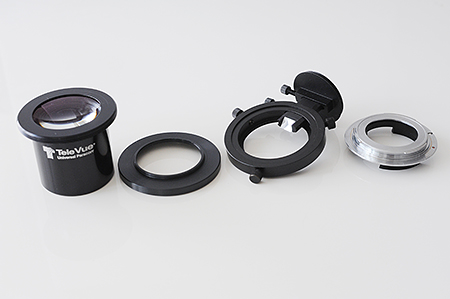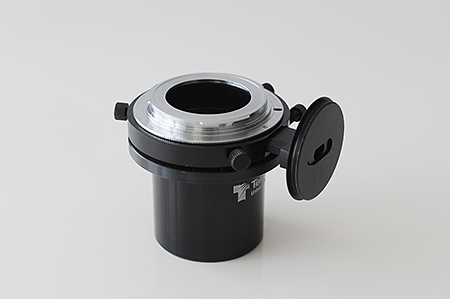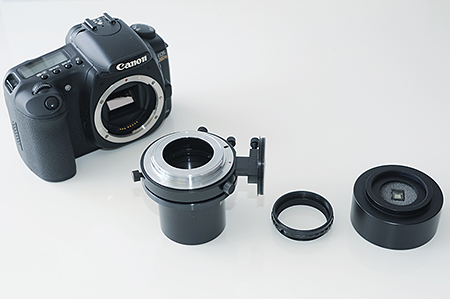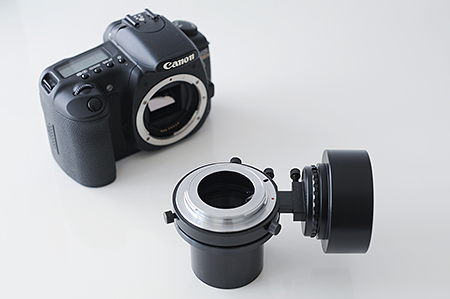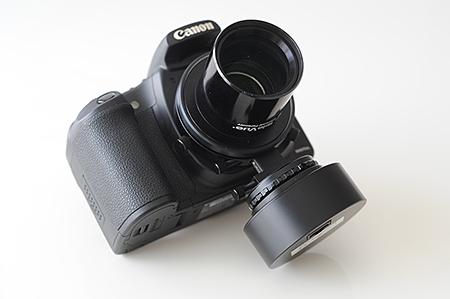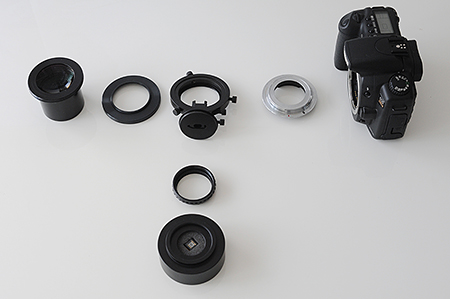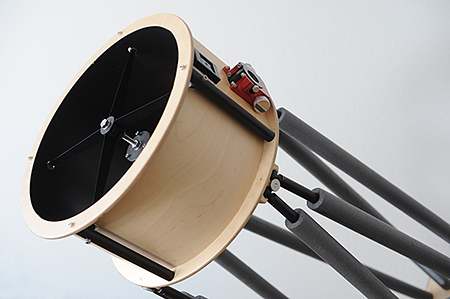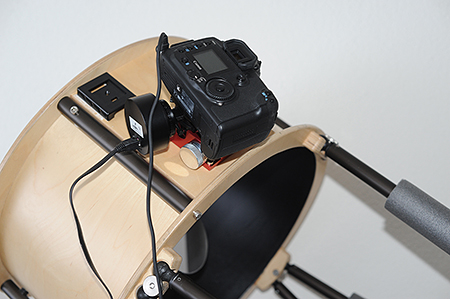The guiding- / imaging setup
No telescope drive can eliminate the need for guiding in long exposure astrophotography. Guiding is necessary to correct for small tracking errors caused by the periodic error of the gear, atmospheric refraction, inaccurate alignment of the telescope mount and flex of the telescope structure. There are two choices to make the tiny corrections needed: Using a separate guidescope or use an off-axis guider.
I use an off-axis guider. With a dobsonian telescope or a Newtonian telescope in general, flexure of the telescope structure is likely to occur during guiding. A separate guide scope cannot account for all the flexure, especially when working with long focal lengths (in my case: 2070 mm for the 16" f/4.5 Ninja and 2300 mm for the 16" f/5 Zambuto). Off-axis guiders divert a part of the light cone of the main imaging telescope to a separate ccd camera. The ccd camera analyzes the position of a star ("guide star") in that light cone and sends correcting signals to the motors of the mount.
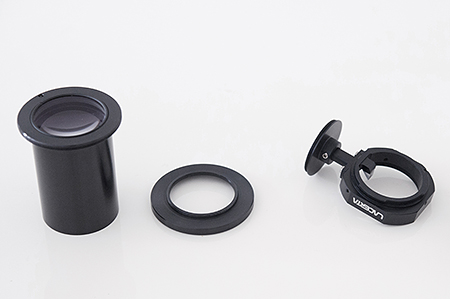
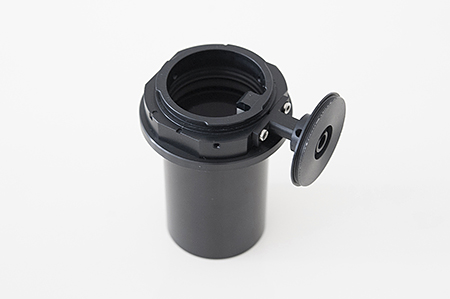
I first used the well-built TSOAG9-EOS off-axis guider. It performed flawlessly but in order to save weight (69 g instead of 149 g), to get a bit closer to the coma corrector (by 2 mm) and to have fewer screws to accidentally loosen, I switched to the Lacerta off-axis guider for EOS cameras. Both off-axis guiders can be purchased at Teleskop-Service in Germany.
As for the autoguider, I chose the Lacerta MGen standalone autoguider from Hungary. It guides the equatorial platform without a PC or a laptop and can control the Canon EOS 450D camera (number, time and pause time of the exposures, waiting time after camera mirror lockup) at the same time. One 7 Ah lead acid battery feeds the MGen autoguider, another one the equatorial platform.
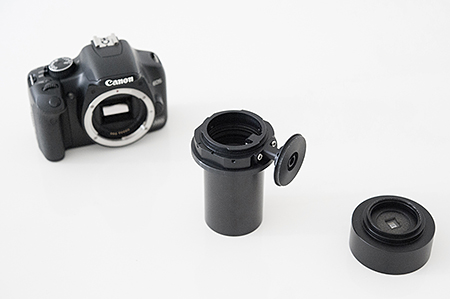
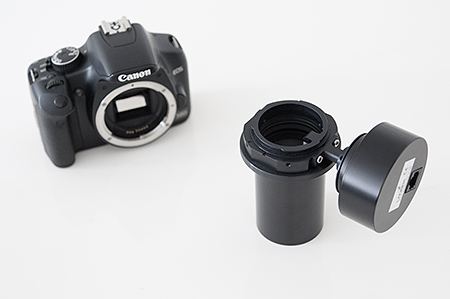
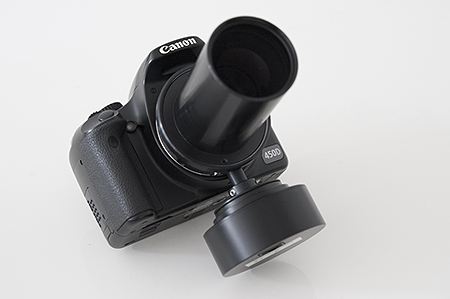
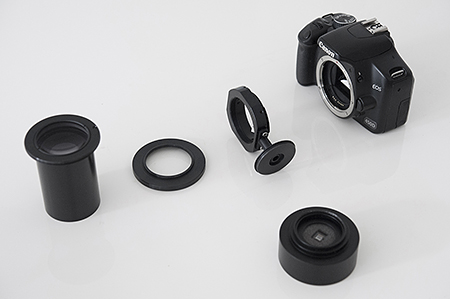
Short focus Newtonians show off-axis aberrations known as "coma". Stars in the center of the field are not affected by coma, but the effect grows stronger toward the edge of the field. Stars affected by coma are shaped like tiny comets instead of points. To prevent this, a coma corrector has to be used.
I started with the TeleVue Universal Paracorr PLU-1106 coma corrector. Unfortunately this correcting lens cannot be used visually, so I later replaced it by the new TeleVue Paracorr Type-2 coma corrector VIP-2010, which can be used both visually and for imaging. The VIP-2010 is longer (80 mm instead of 50 mm) but slightly lighter (200 g instead of 204 g).
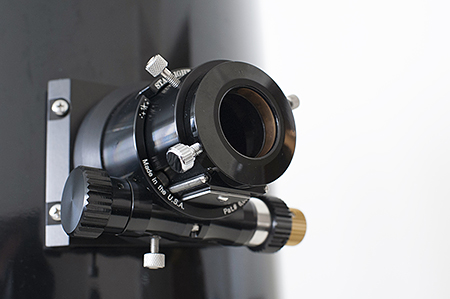
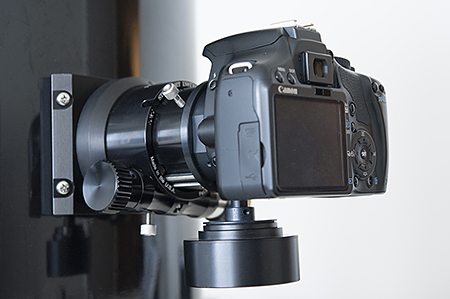
Until 2012, I used a Canon 20Da camera for astrophotography. The Canon 20Da was based on the successful Canon 20D camera. It was released in 2005 and had a modified low-pass filter with increased hydrogen-alpha sensitivity. In addition, it offered a live view mode. It had an 8 megapixel APS-C sensor (15.0 x 22.5 mm) with a pixel size of 6.4 micrometer. It was a very good camera for long-exposure deep-sky photography. Unfortunately, when stacking a large number of Canon 20Da images, the stack exhibited significant amplifier glow which was almost impossible to remove, even with a large library of dark frames.
In 2012, I acquired a second-hand, astro-modified Canon 450D. It has a Baader BCF H-alpha intensifier filter for enhanced hydrogen-alpha sensitivity. The 12 megapixel APS-C sensor is 14.8 x 22.2 mm across with a pixel size of 5.2 micrometer. The Canon 450D shows no signs of amplifier glow and produces less noise than the Canon 20Da. In addition, it is a bit lighter (524 g / 18.48 oz instead of 770 g / 17.16 oz).
Fig.1 - Fig.8 show my current guiding / imaging setup. Further down the page, you will find images of the guiding / imaging setup which I don't use anymore but which did a good job as well.
Continue reading: Part III: The MGEN autoguider
